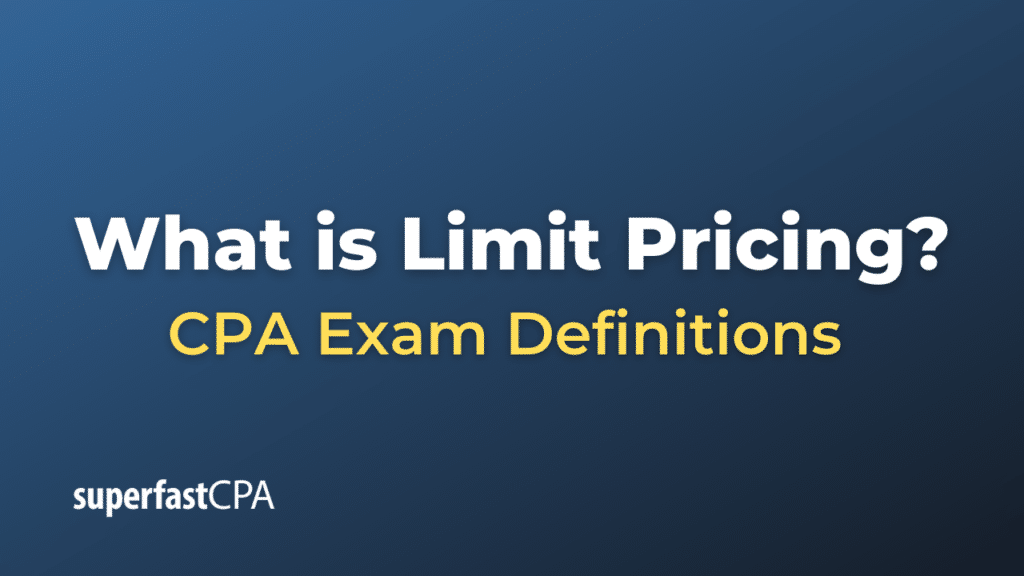Limit Pricing
Limit pricing is a pricing strategy used by firms, particularly monopolies or dominant firms in an industry, to deter potential entrants from entering the market.
In a limit pricing strategy, the firm sets its price, or limits its price, at a specific level that is just low enough to discourage competitors from entering the market, but still high enough for the firm to make a profit. The price is set below the entry cost of potential competitors, making it economically unviable for them to compete.
The purpose of limit pricing is to secure market dominance. If successful, this strategy maintains the firm’s monopoly or leading position in the market, preventing competition and potential erosion of market share. It also allows the firm to then raise prices and earn higher profits once the threat of entry is reduced.
For example, a large firm might have economies of scale that allow it to produce goods at a lower cost than a smaller, potential competitor could achieve. This large firm could then engage in limit pricing, setting its prices just low enough that a smaller competitor couldn’t enter the market and compete without incurring losses. This effectively “limits” the market to the existing dominant firm.
It’s important to note that in many jurisdictions, limit pricing could be considered anti-competitive and may be illegal under competition laws, especially if it’s used to establish or maintain a monopoly.
Example of Limit Pricing
Let’s take a hypothetical example to understand limit pricing better.
Let’s assume there’s a firm, we’ll call it “TechGiant”, that has a dominant position in the market for a certain type of advanced software. TechGiant has been in the industry for a long time, and due to its large scale, it has been able to achieve significant economies of scale, reducing its cost per unit of software to $50.
Now, TechGiant gets wind of a potential new entrant into the market, a start-up we’ll call “InnovateTech”. InnovateTech has developed similar advanced software, but because it’s a start-up and operates on a much smaller scale, its cost per unit is $80.
To prevent InnovateTech from entering the market, TechGiant decides to use a limit pricing strategy. It prices its software at $75 per unit. At this price, TechGiant is still making a profit of $25 per unit ($75 price – $50 cost), but InnovateTech would incur a loss of $5 per unit if it tried to match TechGiant’s price ($75 price – $80 cost).
As a result, InnovateTech finds it economically unviable to enter the market at the current price level, and TechGiant is able to maintain its dominant position in the market.
Please note, this is a simplified example. In real-world scenarios, numerous other factors could come into play, such as customer loyalty, brand recognition, product differentiation, and more. Moreover, as mentioned earlier, limit pricing may be viewed as anti-competitive behavior and could face scrutiny under competition laws in many jurisdictions.













